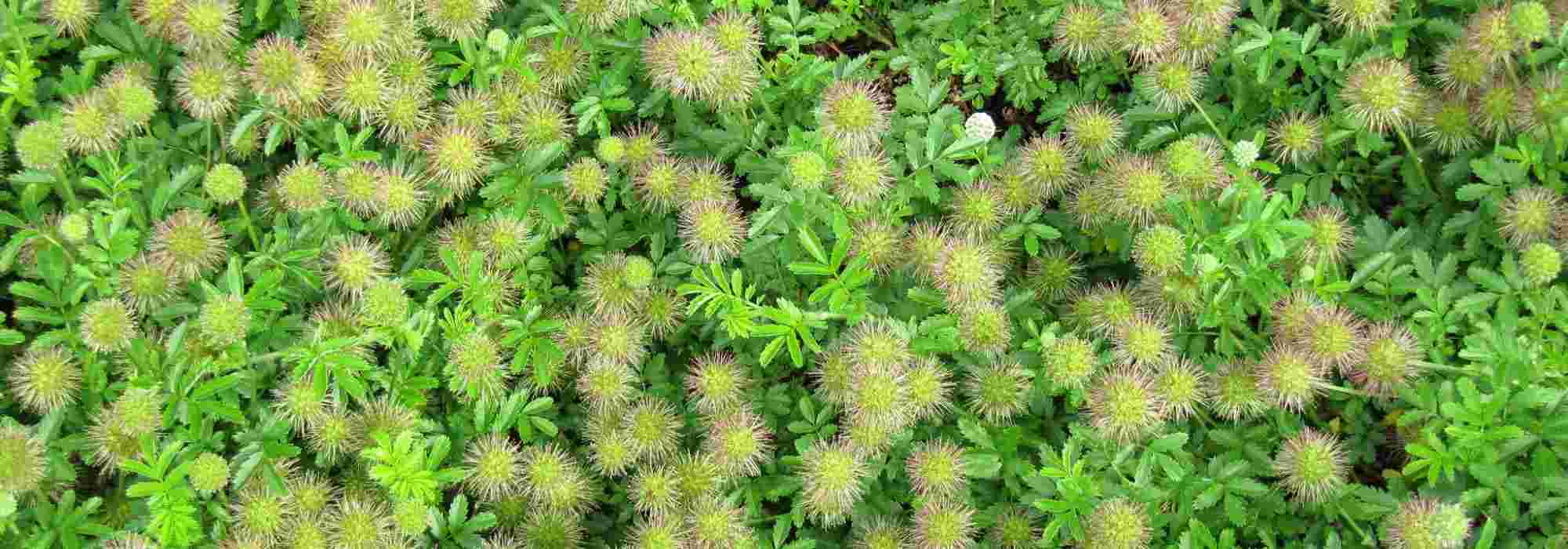
Associate the acaena
Discover our 5 beautiful combinations for this groundcover from the antipodes.
Contents
Austral cousins of our potentillas, Acaenas are essential groundcover perennial plants for filling difficult spaces in the garden. They form large, interesting carpets with their metallic-coloured foliage, especially since the leaves are evergreen.
Although it belongs to the Rosaceae family like potentillas and resembles them in many ways, it is hard not to find it rather strange. However, you will have no trouble growing Acaena microphylla or Acaena purpurea in both sun and shade, provided the soil is light. The flowers are discreet but are followed by astonishing bristly, colourful fruits that can create a decorative effect along pathways or in pots. Discover our five beautiful pairing ideas to enjoy their strange charm.
To avoid any failures, we recommend planting appropriately and adopting our web application Plantfit.
→ Learn more about Acaena in our comprehensive guide: Acaena, burr: planting, growing
In a flowering wall
Acaena inermis ‘Purpurea’ is a small perennial plant with evergreen foliage that changes colour from pink to purple and then to brick red. This plant cascades beautifully from stone walls, creating an elegant, finely cut drape. Acaena prefers well-drained, even dry substrates in winter, but requires some moisture in summer to produce its brownish-greenish flowers, which turn into small spiny fruits resembling chestnuts in autumn. This lovely plant is not invasive, as its spread is easily manageable.
Pair the lovely finely cut foliage of the small Acaena with the lavender-blue bell-shaped flowers of Campanula poscharskyana, which grows between the joints of stones in both shade and sun, along with Hutchinsia alpina, or alpine cress for its small clusters of pure white flowers. Close to a sedum, Aethionema oppositifolium accompanies the Acaena with its small fleshy grey-green leaves covered in tiny porcelain-pink flowers.
Add a touch of charm to your old walls with the wall pennywort Cymbalaria muralis. It blooms for a very long period from April to September, producing pale violet flowers with a yellow throat that nestle in the cracks of stones.
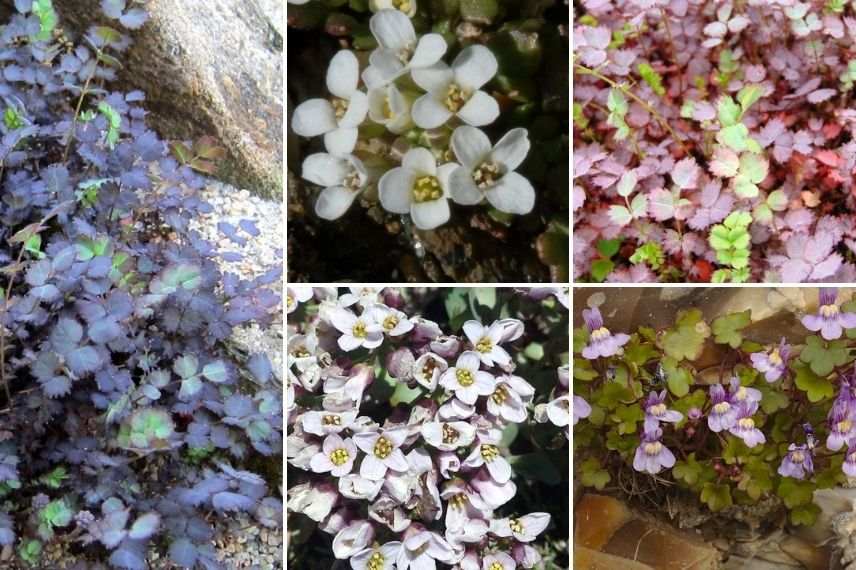
The purple foliage of Acaena inermis purpurea serves as a persistent backdrop for the porcelain blooms of Aethionema oppositifolium (below) and the Alpine cress (above). The wall pennywort, Cymbalaria muralis, generously accompanies it.
In a green roof
Acaena buchananii has dense, evergreen foliage of silver-green sorrel. In spring, it is covered with flowers followed by small brown fruits. This lovely vigorous groundcover thrives in well-drained soil, healthy in winter and not too dry in summer.
It is ideal for greening a facade or a roof in combination with a colourful mix of Sedum Album ‘Superbum’ with a spreading habit of 10 cm high, displaying a beautiful bright green that turns red, while the Sedum reflexum ‘Angelina’ turns bronze-orange in summer. Place the Sempervivum ‘Silberkarneol’ particularly graphic houseleek of rose-red with a green emerald heart covered in silver bristles that play with the light.

Acaena buchananii (on the left) enjoys extreme conditions if the substrate is light. Its evergreen grey-green foliage highlights the brighter colours of Sedum album superbum (above) and houseleek Sempervivum Silberkarneol (below)
In a sunny woodland
T‘Acaena saccaticupula ‘Blue Haze’ is adorned with fine pale grey-blue foliage, exhibiting great delicacy. In June and July, tiny flowers appear, shaped like small violet spheres. In autumn, countless curious little fruits, globose and thorny without being prickly, and of a lovely purplish-pink hue stand out above the foliage and last for several weeks until the end of summer. It forms a dense carpet in shaded areas, reaching a height of 15 cm and spreads limitlessly.
Pair it with a richly flowering dense carpet composed of the Saxifraga x arendsii ‘Peter Pan’, which is covered in spring with a multitude of tiny fragrant blood-red flowers. Similarly, the Waldsteinia ternata covered in lemon-yellow buttercups is ideal for wild gardens or low-maintenance weekend gardens. Illuminate this scene with the pearly white foliage of the Maianthemum bifolium resembling lily of the valley, from which emerge the delicate bluish bells of the Corydalis flexuosa ‘Blue Panda’.
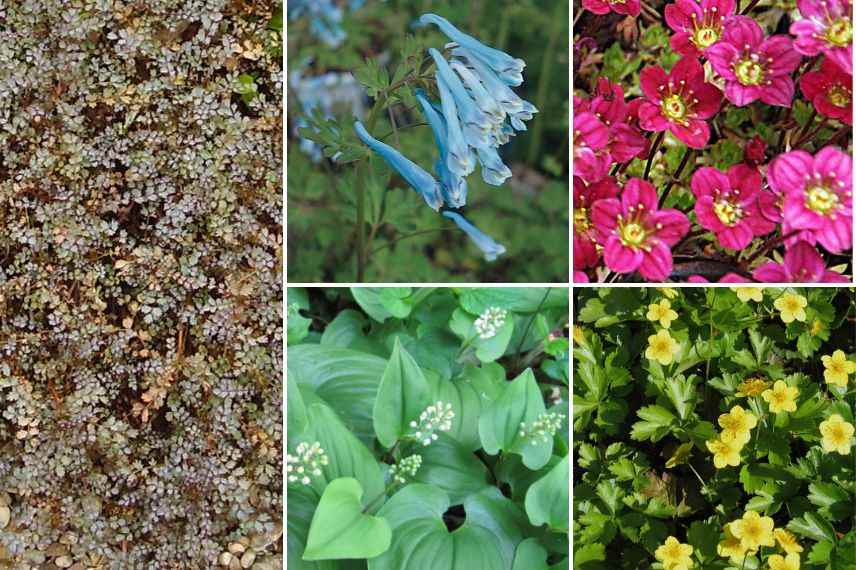
The grey-blue foliage of Acaena ‘Blue Haze’ brightens up any light woodland alongside the vibrant and luscious blooms of Waldsteinia (below) and the saxifrage ‘Peter Pan’ above. Softness is brought by the elegant appearance of Maianthemum and the bells of Corydalis ‘Blue Panda’
As an alternative to lawn
The Acaena magellanica is an excellent hardy groundcover. Its bronze foliage in autumn gently heralds winter. This acaena forms a dense carpet of finely dissected green leaves, on which tiny white flower spheres appear in June and July. It should be adopted without delay as an alternative to lawn.
Mix the acaena with the Chamaemelum nobile ‘Treneague’ false chamomile, quickly forming a low, fragrant, and evergreen carpet of fresh green. It tolerates occasional foot traffic and can therefore be used as an alternative to lawn in small areas. Just like the Pratia pedunculata hardy perennial groundcover, the Thymus hirsutus forms a very low carpet that limits the germination of competing species, much like a moss that conforms to all the contours of the soil. This plant with Mediterranean looks can be used as an alternative to lawn in all regions.
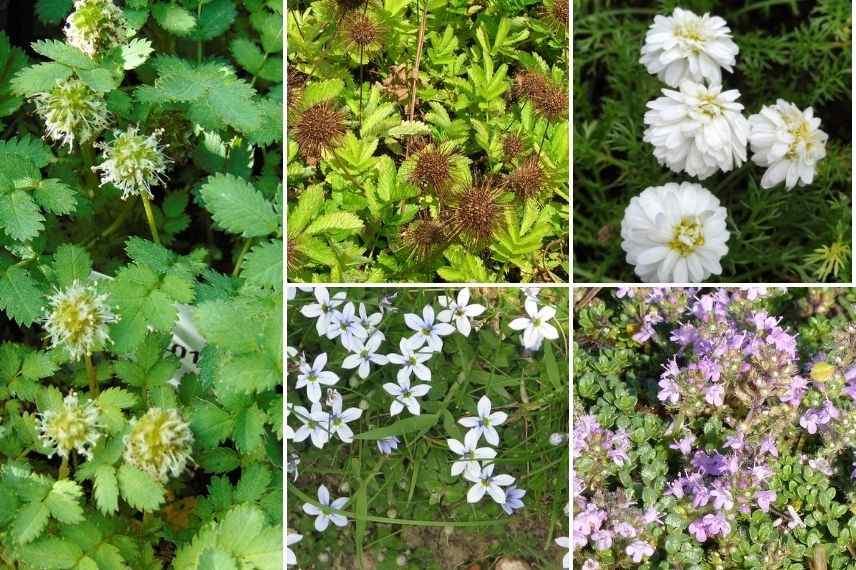
On the left, the Acaena magellanica (flowers and fruits) for a flowering false lawn mix with the false chamomile at the top right or the hirsute thyme and the blue stars of Pratia pedunculata that blooms even in the shade below.
In a container or in a pot on a balcony
The Acaena microphylla ‘Kupferteppich’ stands out with its tiny dark green to bronze washed pink ground-hugging foliage and a globular, spiky bright red fruiting from August to September. This small plant thrives in well-drained soil, healthy in winter and not too dry in summer. In June and July, tiny white to greenish flowers appear in the shape of small spheres.
Add colour to your pot with Sparaxis tricolor, whose flowering produces star-shaped tricolour corollas in various combinations of orange, red to pink, or yellow to white, surrounding a yellow centre edged in black. More subtle, the ‘Aster ericoïdes f. prostratus ‘Snow Flurry’ evokes a large cushion covered in snow and makes a lovely display in a large planter. The Ficinia truncata ‘Ice Crystal’ adds light and originality to this composition. Not very hardy, it is, however, easy to grow in the sun, in well-drained, rather calcareous soil, remaining fresh even in summer.
The little tip that makes all the difference: plant dwarf bulbs in autumn to brighten everything up. The dwarf irises (reticulata and danfordiae), crocuses, and botanical daffodils love acaenas. You can also plant sternbergias in summer for their golden yellow autumn flowering.
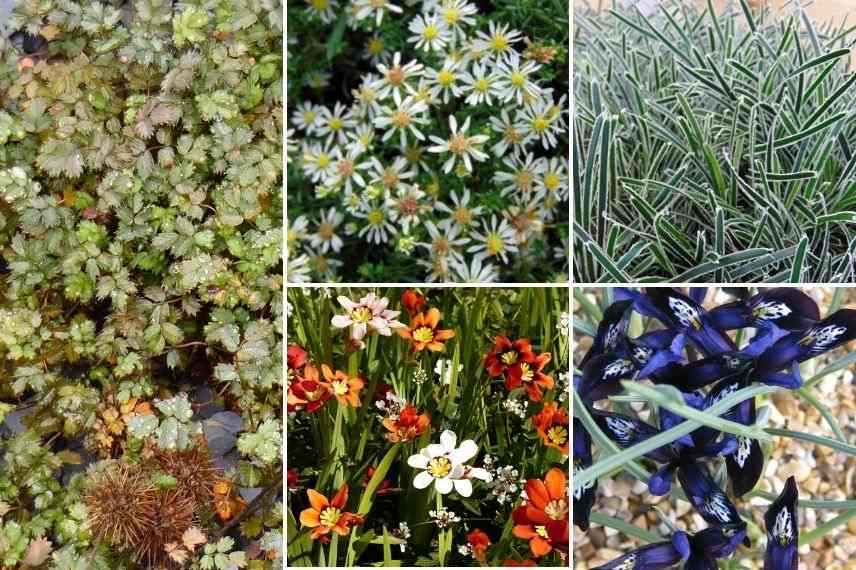
The ‘Acaena ‘Kupferteppich’ and its finely cut foliage organise this beautiful mini-garden composition. The white daisies of the heather-like aster or the brightly coloured Sparaxis (in the centre) dominate the blue-grey with the Iris reticulata and the leaves of Ficinia truncata.
- Subscribe!
- Contents
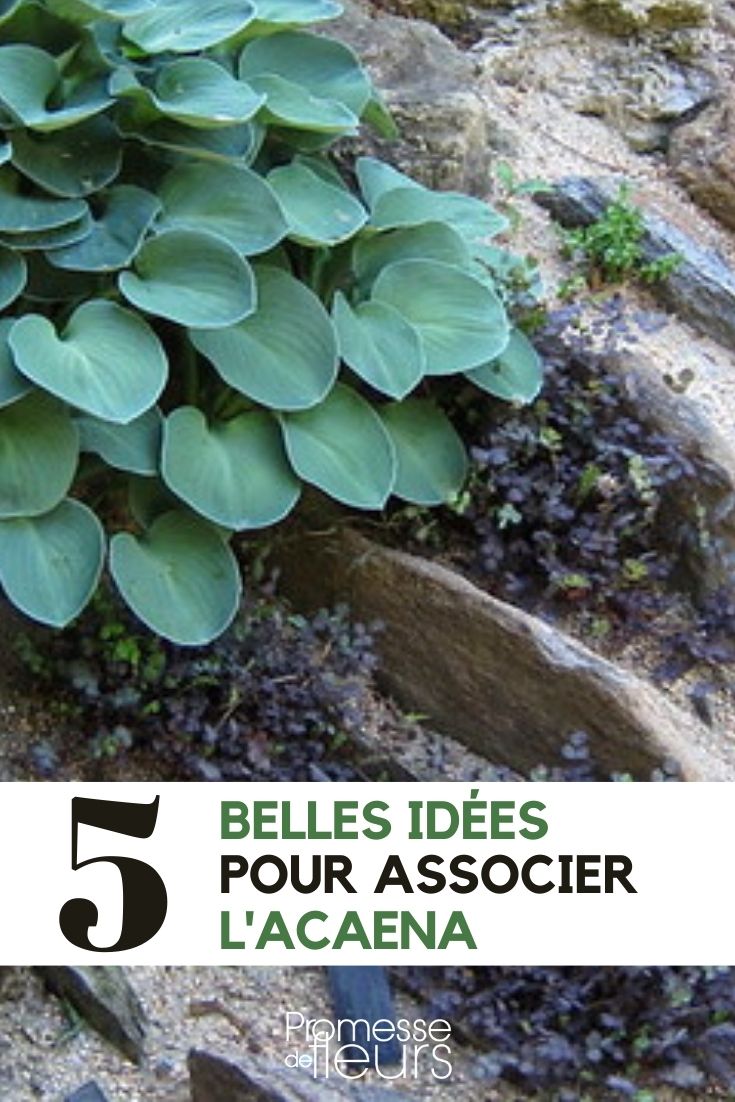































Comments